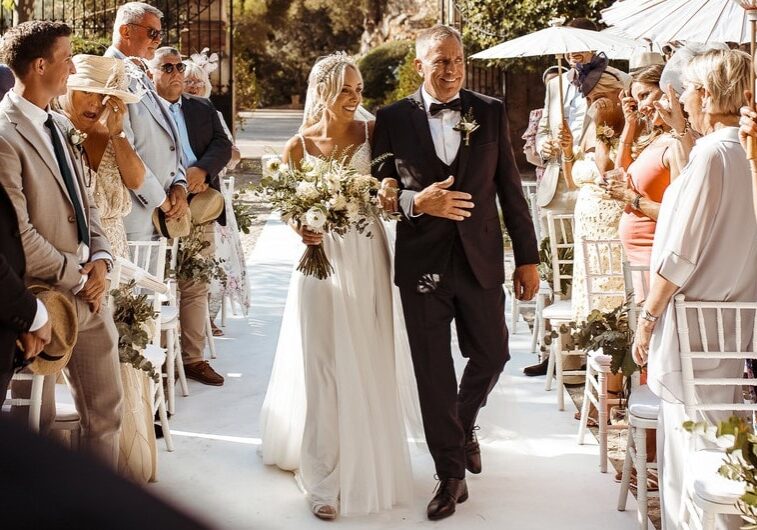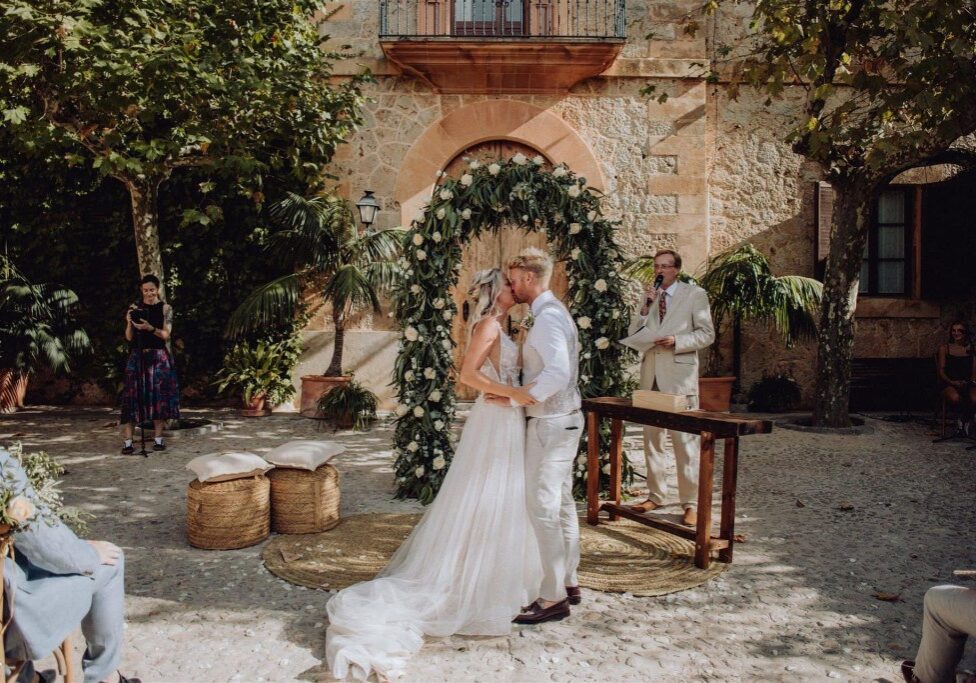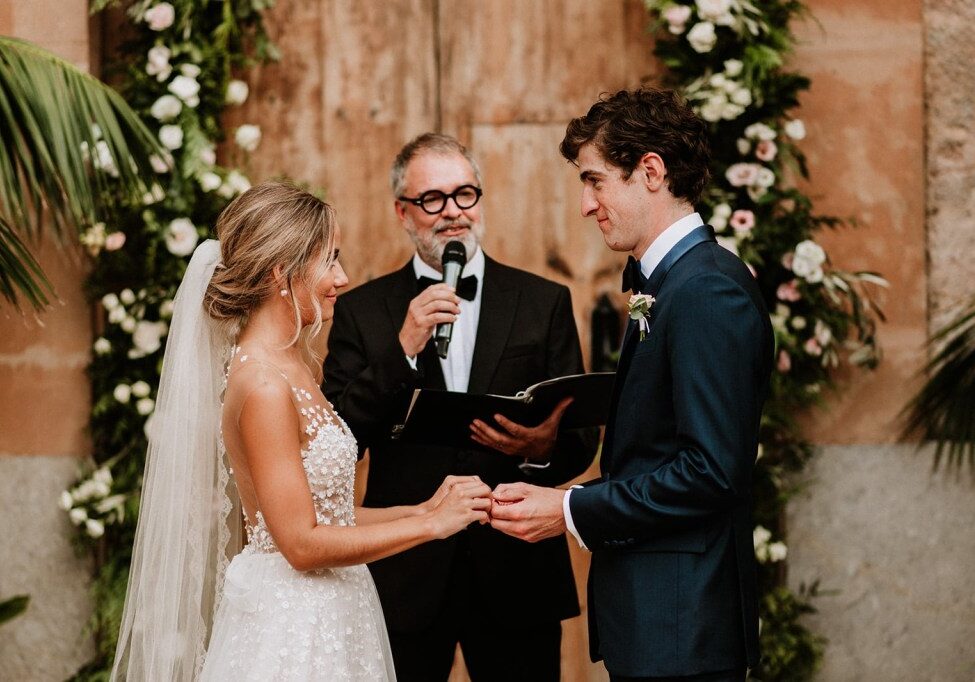The hand-fasting ceremony
From lighting candles to layering colors of sand, there’s a special wedding ceremony ritual to fit every couple’s style.
One of the most popular options is the hand-fasting ceremony, but what is it exactly?
A hand-fasting ceremony has its roots in ancient Celtic tradition, symbolizing the binding together of two people (and the origin of the phrase “tying the knot!”).
During the ceremony, the celebrant begins by explaining the ritual and what it means to the couple; the binding of their lives together and the union of their hopes and desires. The celebrant invites the couple to join hands. They stand side by side, joining one of their right hands with the other’s left. Two friends or witnesses then assist with the tying of the ribbons.  And if the couple have children, this is a wonderful way to involve them, symbolising the uniting of the whole family in the marriage.
And if the couple have children, this is a wonderful way to involve them, symbolising the uniting of the whole family in the marriage.
The celebrant now reads a series of vows as the hand-fasting ribbons are wrapped around the couple’s hands. Generally, a separate ribbon is used for each vow. Then, the celebrant makes an additional statement about the completion of the binding and the commitment it symbolises. The couple can also use fabric hat has special meaning for them instead of the ribbons.
After the hands are joined together, the ceremony can move on to additional vows. Or the hand-fasting can be used for the vows and the ceremony then moves on directly to the ring exchange.
To discuss your hand-fasting ceremony in Mallorca, contact us here.
Some other related blogs
More posts from Mallorca



[…] Another couple are using Liverpool and Everton football scarves. Also, apart from anything-else, handfasting with ribbons provides another great photo […]
[…] If you have children at the ceremony, it’s important to help prepare them for the ceremony. They can find the whole process confusing – there are lots of new people and an unfamiliar setting. If you are having them as flowergirls or ring-bearers, help them practise walking down an ‘aisle’ carrying their basket or cushion and explain what will happen during the wedding. If they get confused, it’s easy for them to forget their role! If the children are very young, it’s good to make sure that a friend, grandmother or aunt is there to look after them. The half hour ceremony can feel like a long time and they may well want to join in but it’s so important that you can focus on each other and the vows you are making without worrying. One great way to involve them is with a hand-fasting which binds the you together a a family. Find out more about our hand-fasting ceremonies here […]